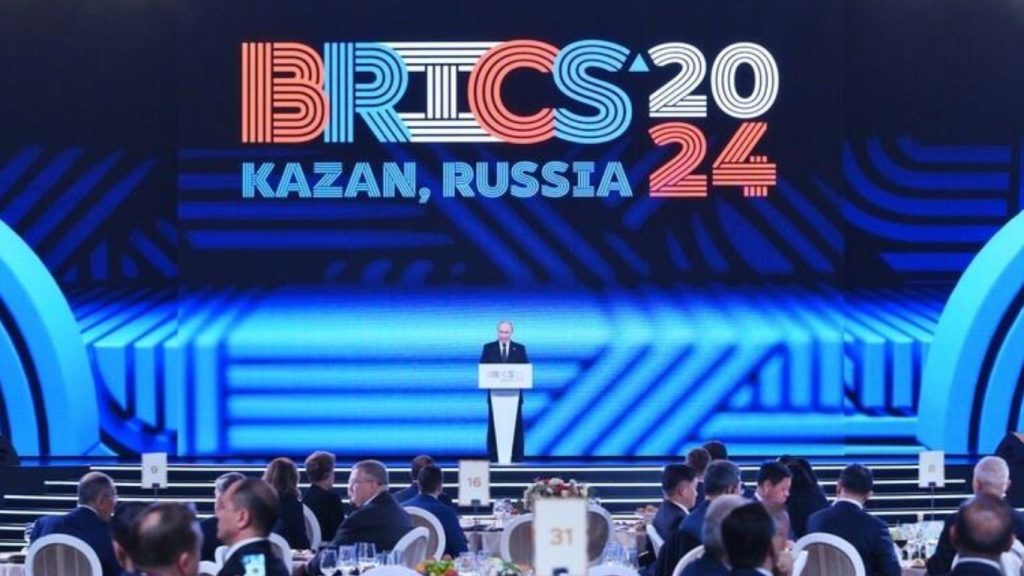BRICS Just Dropped A Manifesto For The New World Order
This week’s Kazan Declaration suggests that the BRICS – in its expanded composition– is ready to open a new chapter in its history.
Never before have such voluminous documents been adopted as a result of the group’s summits.
Moreover, the Kazan Declaration will be the subject of great interest in the world’s political and academic circles, as well as the object of criticism by opponents of BRICS.
For the first time, the group’s unified vision of the current state of the international system is set out in detail.
The Declaration is a voluminous document containing 134 paragraphs, some of which are quite long. The statement adopted at the previous summit in Johannesburg in August 2023, contained only 94 paragraphs, and a document, adopted in Beijing in July 2022 had 75. Thus, year by year the outcome has become increasingly detailed and, as it is now customary to say, substantive, reflecting the gradual increase in the intensity of the group’s engagement and the broadening of the substantive scope of its multilateral cooperation.
The Kazan Declaration consists of a preamble and four sections dealing with:
(1) strengthening multilateralism,
(2) global and regional security,
(3) financial and economic cooperation, and
(4) humanitarian exchanges.
This division seems reasonable and in line with the priorities of the Russian chairmanship announced a year ago.
For the first time in BRICS’ history, the Declaration sets out in detail the group’s shared vision of the current state of the international system, the common or overlapping approaches to the fundamental global problems of our time and to acute regional crises, and the contours of a desirable and achievable world order as the members of the group currently see it. While the document does not provide specific timetables for individual tasks or roadmaps for specific areas of work, it does cover a number of key objectives that the group should or could pursue over the next few years. It is clear that the document is the product not only of the Summit itself, but also of a great deal of hard work by an army of experts, officials and diplomats at various levels in multilateral formats over the past few months.
The multilateral negotiation of the final text of a document of such length and importance is in itself a non-trivial task, especially as the text had to be negotiated not in the old format of the five BRICS members, but with the involvement of new members who had no previous experience of such work. One can only guess at the amount of work that went into the 43 pages of the final document.
Reading through the text of the declaration, it is easy to see that there is a clear balance between the security and development agendas. This balance suggests that the group has deliberately chosen to maintain its very broad mandate and will not focus its future activities on one thing – for example, promoting trade among the group’s members, as some experts have suggested.
Rather than adopting a narrow, thematic approach, BRICS intends to position itself as a multitasking laboratory of global governance, where new algorithms of multilateral cooperation and innovative models for solving the world’s major economic and political problems can be tested, including trade, finance and strategic stability. The group’s political ‘investment portfolio’ is thus more than diversified, and this diversification increases the chances of success for at least some of its many initiatives. This ‘issue-based’ approach to cooperation should help to overcome departmental divisions and to avoid the excessive bureaucracy inherent in many international organizations.

